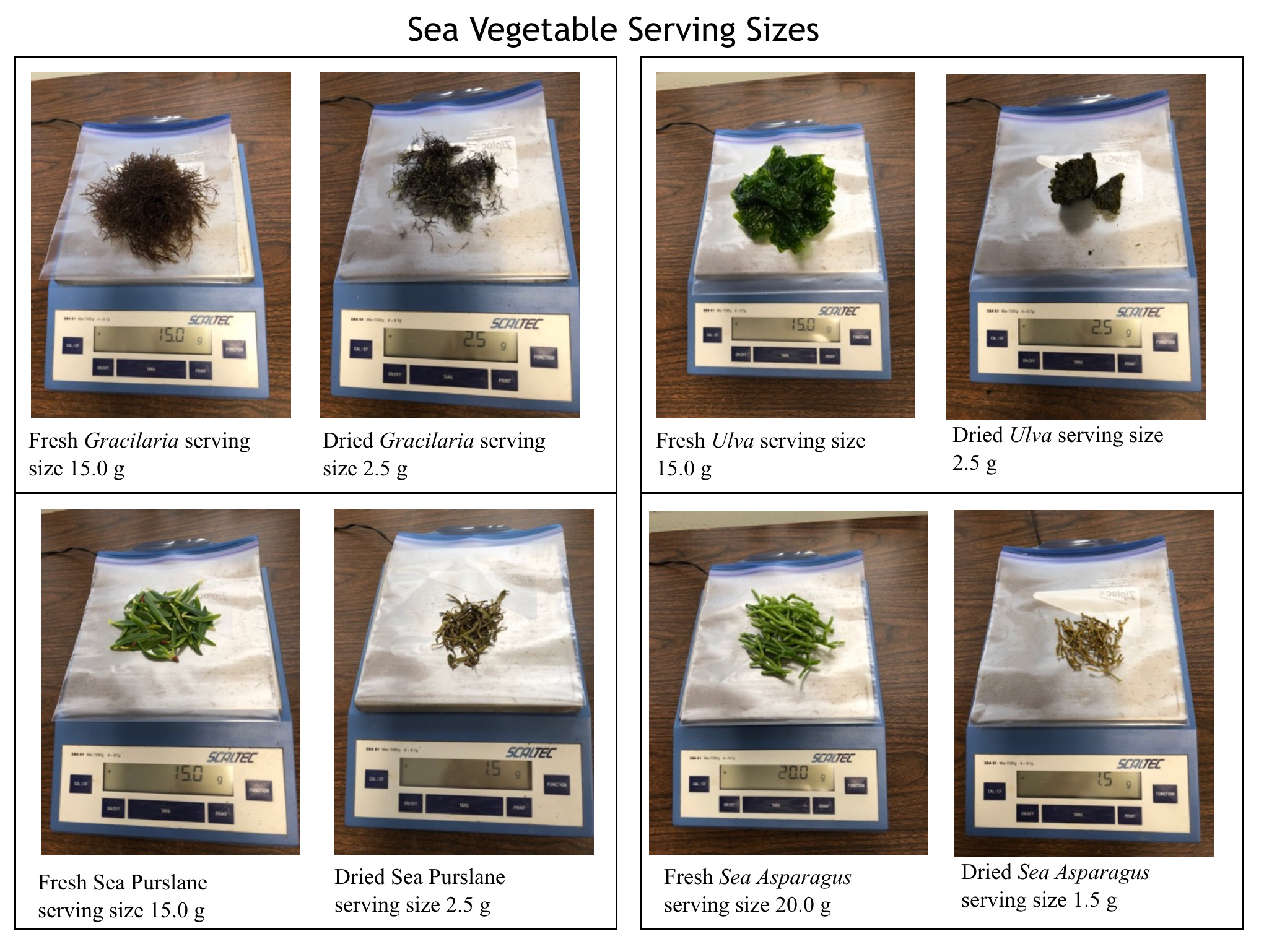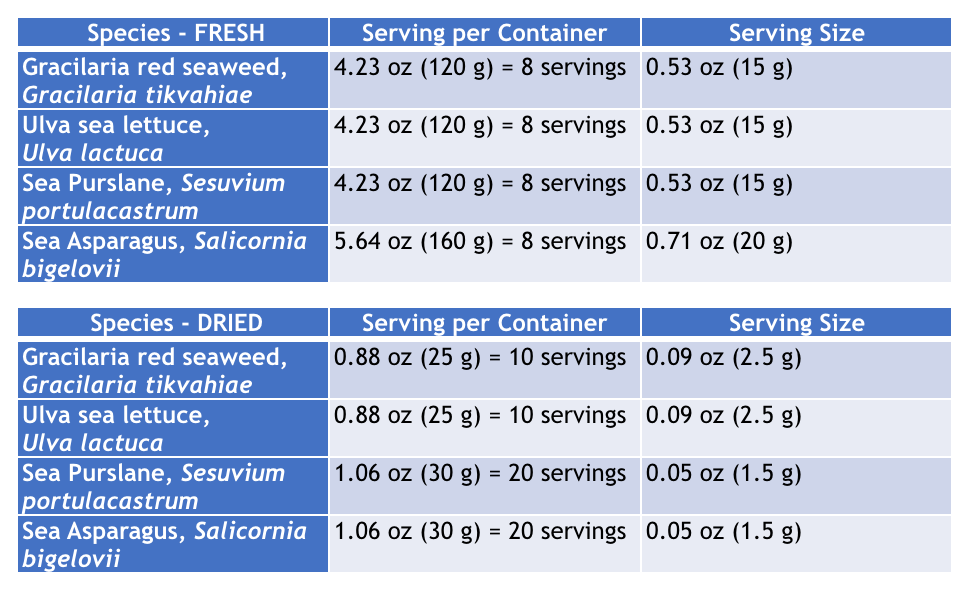
vSea Vegetables: Goals and Mission
Goal of Study
The goal of this 12-month (July 1, 2018 – June 30, 2019) study is to determine the nutritional and market value of four sea vegetables (fresh and dried products) grown in the HBOI IMTA system for human consumption.
This is accomplished using the following objectives:
- Characterize the nutritional value and servings sizes using analyses to develop FDA Nutrition Facts label for the sea vegetables. That includes proteins, carbohydrates, fats, minerals and vitamins.
- Determine potential contaminates for the sea vegetables. The microbiological assays include coliform, E. coli, yeast and mold, aerobic plate count, Listeria, and Salmonella. The class 1 metals include total arsenic, total cadmium, lead and mercury.
- Determine the shelf life for dried Ulva lactuca.
- Determine a potential path for certification for marketing sea vegetables as a food product for human consumption.



Serving sizes were based on visually determining appropriate amounts for the average diet and referencing commercial products and recipes.